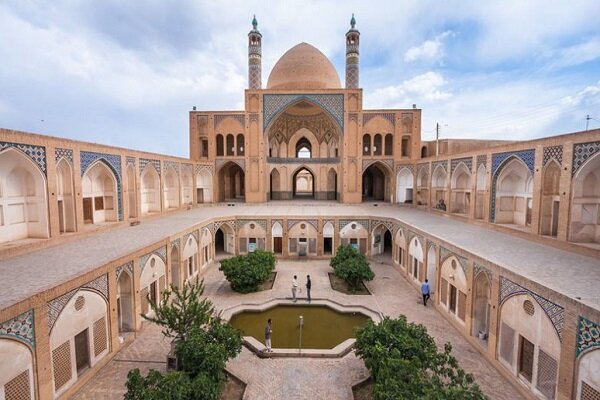Kashan is known for producing carpets, silk and other textiles. Today, Kashan lives most of Iran’s mechanized carpet weaving factories and has an active marble and copper mining industry. The population of Kashan and its suburbs is 400,000.
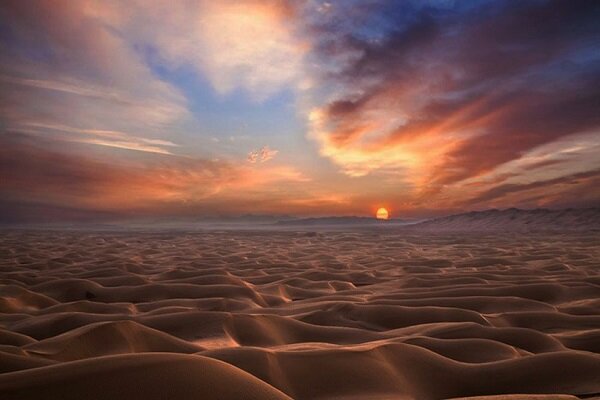
Cashan’s Geography
Kashan city is divided into two parts: mountainous and desert. On the west side, Kashan is the two highest peaks of the Kakas chain, the southwest of Kashan (House of the Iranian National Astronomical Observatory, the house of Iran’s largest astronomer) and the Damavand (Central Iran) of the Part-Mattan Part-Party Park in Kashan, west of Kashan, west of Kashan.
On the east side of the city, Kashan opens up to the central desert of Iran. Kashan is also known for the Maranjab Desert and Caravan Sarai, located near Lake Namak (or Lake Salt). Today, Maranjab and surrounding shift sands are destinations for safari visitors over the weekend.
climate
The climate in Kashan, like other central cities in the country, is hot and dry, and cold at night.

Cashan Rose Water Festival
The Iranian Rose Water Festival is a seasonal and popular festival in Iran’s visited tourist destinations. The Kashan Rose Water Festival is held every May, hosted by Kashan city Kamsar and Niasar. Qamsar Rose Water has a truly reputation around the world and is completely different in terms of quality.
The festival is held every spring, usually from mid-May to the end of June. As mentioned above, the major cities where tourists can visit the Cashan Rose Water Festival are Qamsar and Niasar. Very prominent in making rose water, Kamsar is located 30 km from Kashan.
Niasar, known as the ancient garden of Iran, is located 30 km from the west of Kashan. Apart from its popularity at the Rose and Rosewater festival, Niasaar is also famous for its historic and natural attractions.
In May, the Niasar and Kamsars of Kashan are filled with the aromatic smell of damask roses, and you can also find a variety of ways to make roses water.
Souvenirs and handicrafts
Kashan Baklava: Baklava is one of the sweets cooked in many Iranian cities, but Kashan Baklava has another flavor. A unique feature of these Cashan souvenirs is the nuts they use in their ingredients. Kashan Baklava is made up of five nuts. Walnuts, almonds, hazelnuts, pistachios and Indian almonds have extremely high nutritional value.
Haji Badami Sweet: It is one of the famous Kashan souvenirs for its large amounts of almonds, and can also be nutritious because it uses nutmeg and flour. Special cookies from Yazd, Shiraz and Kashan.
Carpets and Rugs: Weaving carpets is common in many Iranian cities, but each city has a unique design. The Kashan carpet pattern is also very beautiful and is also used to make machine-woven carpets.
Ceramics: Another Cashan souvenir is the art of ceramics, belonging to 7,000 years ago. Evidence is shown that the oldest pottery shops were associated with the Silk Civilization of Cashan.
Tourist attractions and historic views
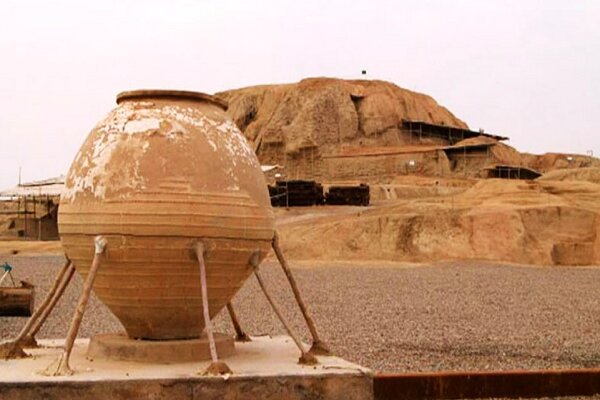
Tape Silky Rack or Silky Rack Hill:
In 5,000 BC, cavemen on the Iranian Heights began to turn to the plains for new life, due to climate change and the formation of fields and grasslands. The historical background of the Kashan district is associated with the oldest human settlement on Iran’s central plateau known as Siarq, and Kashan was one of the first foundations of human civilization. Archaeological excavations at the Siarku hill in Kashan show that the history of human existence in the area can be traced back 7,000 years ago. In fact, over 5,000 years ago, people on the Hills of Siarq were overturned by the Aryans, where monuments were discovered over various periods, including images of horses and sun, iron armor, and long tubs of swords and spears.

Niasar Falls:
Niasar Falls begins with a water spring near the Temple of Fire, dating back to the Sassanid period. Niasar owns all the history and natural views of this ancient spring. Spring also waters the vast, lush green lands of Niasar. The bedrock passed through the waters of Niasar Falls was usually made of lime, and as we age it was a pleasant shape. Niasar Falls is over 25 meters long. The delightful atmosphere of the area surrounding Naiasar Falls is a good choice to spend quality time enjoying the natural scenic views.
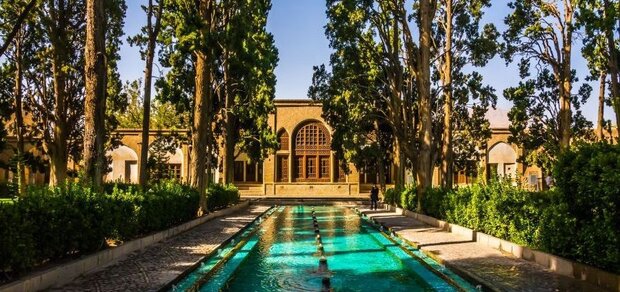
Fingerden:
Fingerden is 6 km from the city south of Kashan. It goes back to the safavid period. It is one of the most precious historic places in Cashan. Several historical sources reference the garden dates to the rule of Al-Bay. The inside building of the garden features the entrance door and tower, the alcove to the south of the garden, the museum to the west, the bathrooms large and small, and the library of the eastern gardens. The garden fin bathroom is the historic place where Nasraar Dinshah killed the Prime Minister Amirkabir. In the south of Fingerden there are two buses known as small and large buses.
The small baths are from the Safavid era, while the larger baths are from the Kajar era, built by Fass Ali Shah. The large bathroom was for the courtiers and the small bathroom was for ordinary people. In the southern part of the fin is the spring known as Cheshmee Sulaymaniye. Most garden trees range from 100 to 470 years old.
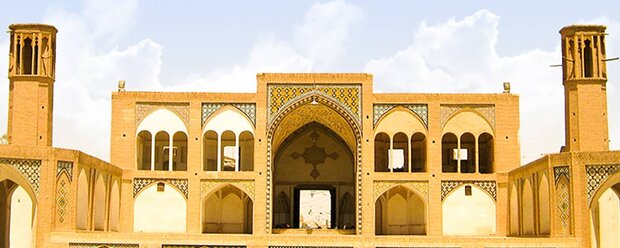
Mosques and Schools in Agha Bozorg:
It is one of the most beautiful and magnificent mosques built during the Kajal era. The building’s dome features its beautiful architecture and its design, making it very unique and beautiful.
The mosque was built in the late 18th century by Master Mir Ustad Haj Saba Ali. The mosque and theology school are located in the heart of Kashan city.
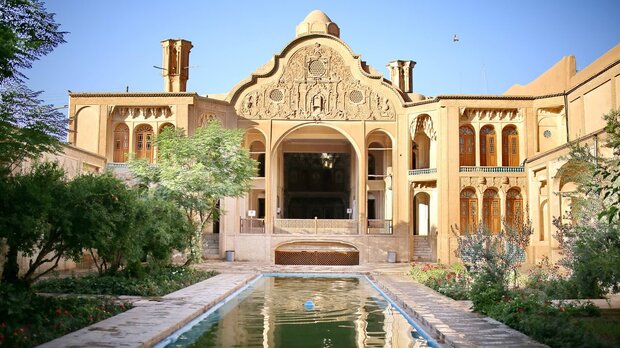
Boroujerdi House:
The Borgherdi House is another valuable historical monument built during the Kajal period. The most important part of this house is the summer mansion in front of the entrance door.
It consists of five doors: a king hall, a room and a spectacular stucco. The dome of the summer house depicts flowers, birds and animals. You can also see photos of Qajar Kings on the wall. One feature of this old house is its stunning wind tower. Broujerdi’s house does not have gardens in both the interior and exterior sections. The building was built on three floors and four sides, surrounded by an inner and outer courtyard. The Borgeldi home was one of the main mansions of the king and courtier accommodation.
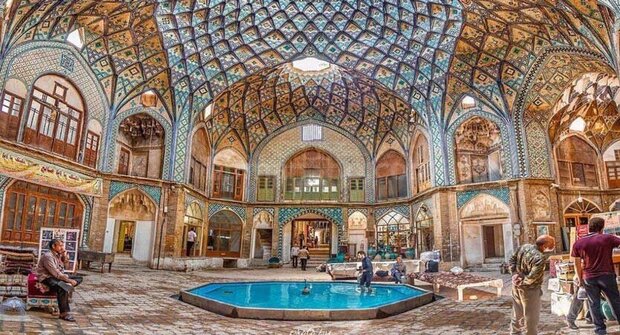
Cashan’s Historic Bazaar:
The Kashan Bazaar is an old bazaar located in the heart of Kashan city, Iran. It is believed to have been constructed in a renovated state during the Safavid period during the period of Seljuk. The Bazaar has a famous architecture. In particular, the Timchi Amin Ododore section, where the magnificent wells were built in the 19th century, is home to famous architecture.
Traders who visited the bazaar usually remained in these caravan allies as they were close to the city’s main gates and played an important role in the city’s economic activity.
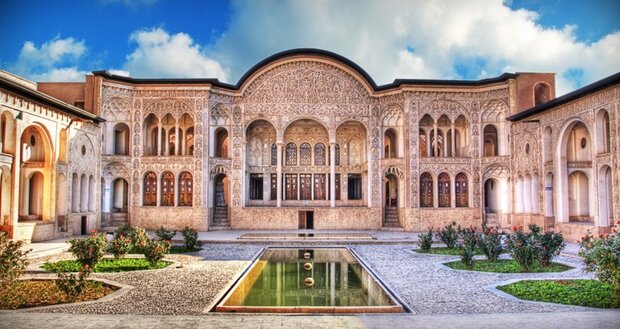
Tabatabaei House:
The Tabatabai home is known as the bride of the Iranian home due to its special beauty. This house is located near Borgeldi’s house. The house consists of four courtyards, the central courtyard belongs to the exterior, and the two courtyard belongs to the interior and the courtyard for the crew. Another important benefit of building a home in addition to cooling and temperature control is the easy access to Qanat and resistance to earthquakes.
The interior section of the house consists of a simple five-door room in the center and two courtyards on either side of the house, with wind catchers flowing through the air inside the basement. This was also the residence of the Tabatabai family. The northwest courtyard on the house is larger and has more rooms. Beneath the interior section is a large basement with unique features, such as wind catchers, perforated roofs, double-sided walls and the presence of ponds.
Republished

